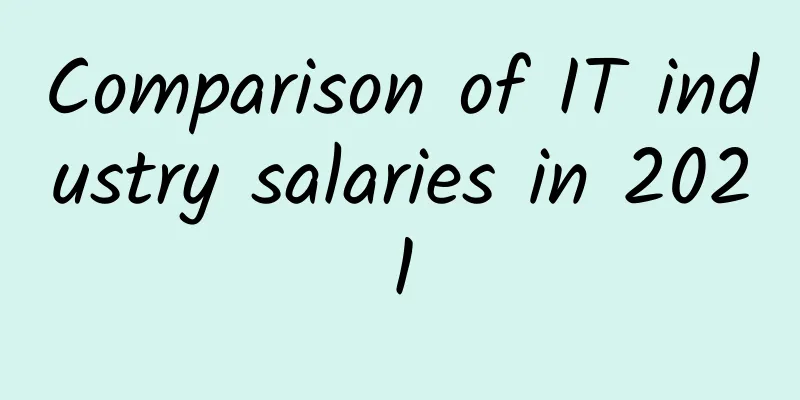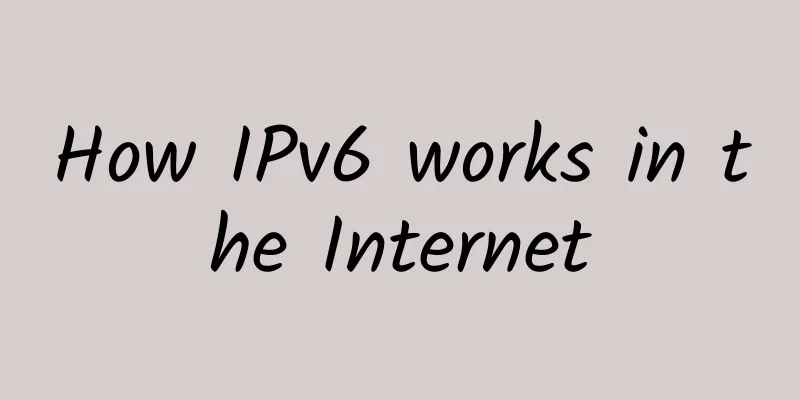The emerging industries brought by 5G have exploded, creating so many new jobs, so there is no need to worry about unemployment

|
I have had my driver's license for more than a year, and my family also has a car. Logically, I should be considered an "experienced driver" if not an "experienced driver". However, I am not! Two days ago, our car was parked in the community, and my husband went upstairs to deliver something. The car behind me asked me to move. My mind went blank and I didn't know how to move. I had to say, "Sorry, I don't know how to drive. My husband will be down soon." After getting my driver’s license, I only drove once, which was the day I got the license. To celebrate for me, my husband, in his own words, “generously entrusted his life to me.” He sat in the passenger seat, and I drove around the neighborhood a few times. After that, he never let me drive again. His attitude was: impatient, distrustful, and nervous. He was nervous about his life and his precious car. I kept saying that I didn’t care about his car, and that I would save money to buy a QQ. If I crashed, I wouldn’t feel bad. He laughed at me and said that I didn’t need to save money to buy a QQ and that I could buy one now... Under this blow, I have forgotten that I am a person with a driver’s license. With the arrival of the 5G era, I wonder if this can change my “dilemma” As a non-technical person, my understanding of 5G is represented by the launch of driverless cars. If driverless cars can really be sold, then it doesn’t matter whether I have a driver’s license or not, right? Another understanding is the network speed. I don’t know much about 5G. But after receiving calls from mobile operators asking me to upgrade to 5G recently, I did some homework and found that, in fact, our lives are now slowly surrounded by 5G. This article will popularize the relationship between 5G and ordinary people like us. What is the difference between 5G and 4G?The key difference between 5G and 4G is not only its high speed and large bandwidth, but also its more efficient and stable ubiquitous IoT connection, as well as ultra-high-speed and low-latency network transmission. Specifically on the technical level, these differences can be compared from the three major application scenarios of 5G technology: eMBB, mMTC, and uRLLC Image from "5G Empowers Artificial Intelligence and Industrial Internet"
Representative current scenarios: smart cities and smart environmental protection.
From a communications perspective, these three technologies have their own strengths, and their ultimate goal is signal processing and transmission. For the industries that these technologies can truly empower, it depends more on which technology the players in this industry are better at using and which technology they tend to choose. A picture shows: What changes can 5G bring? Image from "5G Empowers Artificial Intelligence and Industrial Internet" The main service objects of 1G-4G are people, but with the arrival of 5G, as a basic network infrastructure, it not only serves people, but also serves objects and society. What changes can 5G bring to everyone?Image from "5G Empowers Artificial Intelligence and Industrial Internet"
Explosion of emerging industries brought by 5G1. Intelligent robots Service robots include: household service robots and public service robots. Among them, household service robots include housekeeping service robots, educational and entertainment service robots, elderly care and disability service robots, personal transportation service robots and security monitoring robots. The rise of artificial intelligence has promoted the intelligence of the housekeeping industry, and household robots are more widely used. For example, Tmall Genie and Xiao Ai are representatives of household robots. We already have 2 Tmall Genies at home, so in fact, robots have begun to become popular, but different robots have different functions. Public service robots include hotel service robots, bank service robots, venue service robots and catering service robots. They are widely used in industries with large-scale intelligent service needs, such as hotels, finance, telecommunications, electricity and logistics, providing enterprises with high-quality and efficient services on the basis of low investment. There are three steps for intelligent robots to achieve specific functions: perception, processing and execution. These three steps are completed by the hardware and software systems of intelligent robots. The 5G+ artificial intelligence technologies used include: speech recognition, image recognition, biometric recognition, expert system, intelligent search, automatic programming and intelligent control. 2. Wearable devices 2012 was called the "first year of smart wearable devices" due to the debut of Google Glass. Since 2013, various companies have entered the research and development of wearable devices and have launched products such as Huawei TalkBand B1, Apple and Samsung smart watches, and the Boom Band bracelet released by Baidu and TCL. Wearable devices use technologies such as perception, recognition, wireless communication and big data to achieve user interaction, life entertainment, medical health and other functions, providing the wearer with a perfect technological experience. 5G+artificial intelligence will bring a new technological experience to wearable smart devices. 3. Internet of Vehicles According to the definition of the Ministry of Industry and Information Technology, the Internet of Vehicles refers to the connection of vehicles with everything (V2X), including other vehicles, pedestrians, road facilities, etc., so that cars have a wider range of perception capabilities, detect potential risks, and optimize route planning. The Internet of Vehicles includes the following interconnections:
Image from "5G Empowers Artificial Intelligence and Industrial Internet" What are the benefits of driverless cars? Sebastian Thruns, the chief developer of Google's driverless cars, said: Google's driverless cars can reduce commuting time and energy consumption by 90%, and can reduce the number of cars by 90%. However, the book "5G Empowers Artificial Intelligence and Industrial Internet" emphasizes that for scientific rigor and conservative considerations, the data is adjusted to 50% when calculating. The two directions of automobile technology development are intelligence and networking, and the combination of the two becomes intelligent networked cars. That is to combine networked cars with autonomous driving. Baidu started the driverless car project in 2013, and its driverless cars have obtained the first batch of domestic autonomous driving licenses. In 2016, domestic autonomous driving broke out, and car companies such as BAIC, SAIC, and Changan announced their autonomous driving strategic plans. In 2018, the world's first L4-level driverless bus "Apollo" produced by Baidu Apollo and King Long Bus has officially rolled off the production line. The development of 5G makes the realization of autonomous driving possible. 4. Drones Drones are mainly divided into military drones, industrial drones, and consumer drones according to their applications. Military drones are mainly used for reconnaissance, electronic warfare, and unmanned combat aircraft; industrial drones are mainly used in agricultural plant protection, power inspection, police law enforcement, geological surveys, environmental monitoring, and forest fire prevention; consumer drones are mainly used for personal aerial photography, film and television aerial photography, and remote-controlled toys. 5G+AI is the key technology for improving the autonomous performance of drone systems in the future. The intelligence of drones is mainly reflected in the path planning capability of autonomous flight, the autonomous decision-making capability of executing tasks, and the autonomous collaboration capability with air fleets. Among these capabilities, autonomous planning is the first in the trend of drone intelligence. At present, drones still rely on humans to preset routes, which has low efficiency and flexibility. In the future, drones should be able to autonomously plan flight routes based on individual tasks and corresponding constraints. 5. Smart Home Through 5G communication modules, sensors, etc., smart home products can better respond to user operation needs and adapt to environmental changes compared to traditional home products. On this basis, excellent interactive experience will bring differentiated competitive advantages to products, starting from the earliest touch screen + APP to voice interaction and biometrics that free hands. Various companies are also constantly promoting the application of voice interaction in more smart home scenarios. ①Smart kitchen It allows remote and multi-interactive control of kitchen appliances, collects and analyzes data in kitchen scenes, makes intelligent recipe recommendations, and enables one-click ordering of ingredients. ②Smart audio and video entertainment With the home theater as the background and the background music system as the center, far-field voice interaction is achieved through smart TVs, speakers and other products, and programs are intelligently recommended based on preferences. ③Smart bathroom The product portfolio includes smart toilets, smart bathtubs and smart showers, which support remote and automated control while taking into account the goals of energy conservation and environmental protection. As an indispensable part of people's lives, the intelligent development of smart home is an inevitable trend. In the future, 5G+ edge computing technology will also be embedded in the smart home system as a basic technology. The control and data analysis of all connected products will be concentrated on one smart terminal, and personalized services will be provided to users by closely meeting consumers' needs for details, emotions, and care. Through the interaction between any products and between products, an integrated smart home will be built. Having said so much about the impact of 5G on emerging industries, for me, the first thing I did was to change to a 5G mobile phone and then upgrade the package of the mobile phone card~ |
>>: Many manufacturers are competing to lay out the Wi-Fi 6 industry chain
Recommend
DogYun New Year Promotion: 30% off on Elastic Cloud/20% off on Classic Cloud, starting from 16 yuan/month, top up 100 yuan and get 10 yuan free
The Lunar New Year is here, and DogYun has launch...
NTT and CheckPoint Join Forces to Help Enterprises Defend Against Security Threats
[[409785]] As a global strategic partner of Check...
When porting your number to another network, operators should first change their service mindset
Because the Premier clearly pointed out in the go...
5 exciting 5G use cases
As the fifth generation of wireless technology, 5...
Overcoming the Security Challenges of Software-Defined Networking
Today, more and more organizations are embracing ...
RepriseHosting: 30% off Seattle servers, L5640/16GB/1TB/10TB starting at $27/month
The tribe has shared information about RepriseHos...
The competition among the four major data center host network virtualization technologies
Since it is the virtualization of the host networ...
HostDare: 35% off KVM in Los Angeles, starting at $25.99/year
HostDare is a foreign VPS hosting company founded...
How to understand the differences and connections between Session, Cookie, and Token
This article will introduce Session, Cookie, and ...
The future of 5G and IoT in smart cities
Simply put, a "smart city" leverages em...
Do you know the functions of these interfaces on the monitor?
From the previous CRT monitors to the current LCD...
ROOBO CTO Lei Yu: Artificial intelligence will not take the big and comprehensive route, vertical fields will blossom first
[Original article from 51CTO.com] Not long ago, a...
A brief discussion on Telemetry network telemetry traffic analysis technology
·Introduction· With the rapid development of clo...
Let's talk about the time-consuming TCP connection
When developing daily interfaces on the Internet ...
ZJI: 520 yuan/month Hong Kong server-2*E5-2630L/32GB/480G SSD/30M bandwidth/2IP
ZJI has released a special promotional dedicated ...









